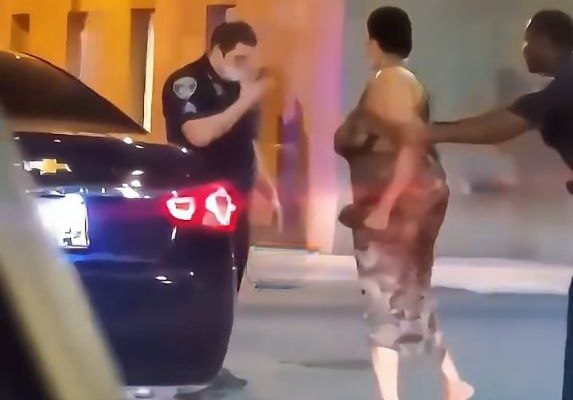Social media erupted after a now-viral video surfaced showing a woman physically striking a police officer during a heated encounter. The short clip, which made rounds on platforms like TikTok and X (formerly Twitter), ignited widespread debate about law enforcement, civil behavior, and the power of viral content.
The Incident
In the video, the woman can be seen raising her voice before delivering a physical blow to the officer, who remains composed throughout. Rather than respond with force, the officer chose to de-escalate the situation and proceed with a non-violent arrest.
According to an official statement from the New York City Police Department (NYPD), the woman was promptly taken into custody. She now faces charges of Assaulting a Police Officer and Disorderly Conduct, both of which carry serious legal implications. If convicted, she could face more than a year in jail.
Police Response
An NYPD spokesperson commented: “Attacking an officer while they are performing their duties is a serious offense. This clip serves as a clear reminder that aggressive actions come with consequences.” They also praised the officer involved for handling the situation with professionalism and restraint.
Social Media Reaction
The video gained rapid traction online, sparking a flurry of opinions. Some praised the officer’s calm demeanor, calling it a textbook example of proper de-escalation. Others questioned whether the charges were too severe, especially given the brevity of the altercation.
Legal experts weighed in, stating that physical acts against law enforcement are generally met with tough penalties — not only to protect officers but also to reinforce the rule of law.
Legal Perspective
In New York, striking a law enforcement officer constitutes a felony. Even a brief physical encounter can result in substantial penalties, including jail time and a lasting criminal record. Legal analysts say prosecutors often pursue these cases aggressively to deter similar incidents.
Public Dialogue
The case has reopened conversations about the fine line between citizen frustration and illegal action. Supporters of the officer argue that police must often show restraint under pressure — as seen in this case — and that such composure deserves recognition.
Others have urged people to look deeper, questioning whether prior events leading up to the confrontation were captured in the clip. Some argue that online videos can misrepresent context, while others maintain that transparency via social media is essential for public accountability.
Law Enforcement Training and Restraint
Police training emphasizes the importance of staying calm in high-stress situations. NYPD officials say the officer’s decision not to retaliate physically — even after being struck — is a clear example of professionalism and training in action.
De-escalation tactics are central to modern policing, and this officer’s conduct is already being cited by trainers as a case study in how to respond without force.
The Broader Picture
This event also touches on broader issues: public behavior, emotional escalation, and the influence of digital platforms. In an age where a few seconds of video can go viral globally, small moments can have big consequences — for both civilians and law enforcement officers.
Social media experts note that such viral clips often become flashpoints for larger discussions about justice, fairness, and authority.
What’s Next?
The woman at the center of the video will face legal proceedings in the coming weeks. Her legal team may attempt to argue mitigating factors or seek a plea deal. Meanwhile, the public and media will continue to monitor developments closely.
For the NYPD, the incident underscores the importance of continued public engagement, transparency, and officer training. For citizens, it’s a reminder that actions taken in a moment of anger can lead to long-term consequences — especially when cameras are always rolling.
In Conclusion
This viral incident — a woman striking an officer and being arrested — has become more than just a brief moment caught on video. It’s now a case study in modern policing, public accountability, and the impact of digital culture on legal systems.
It highlights the need for both restraint from law enforcement and responsibility from the public. And it reinforces a simple truth in our viral age: actions, especially in public, don’t just have consequences — they have an audience.



